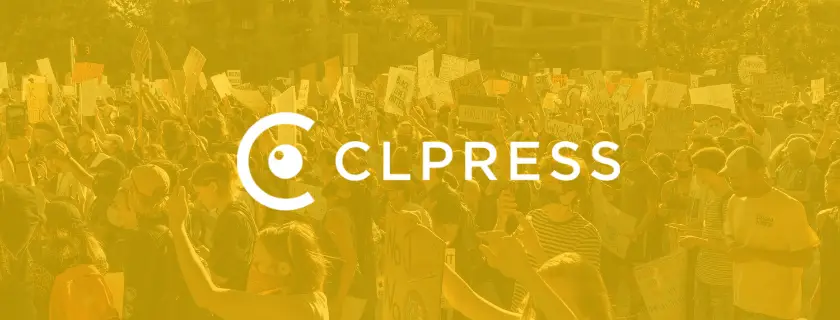7 Key Tips for Creating a Viral Video

At a time when the video format has flooded our networks, creating a viral video may seem complicated or a matter of chance. The good news for brands and content creators is that there are tricks to the trade!
At Yuzzit, video editing software, we've analyzed the videos that have made the biggest impact, to provide you with the 7 essential ingredients for creating a viral video. Discover our practical tips for getting your audience to react and engage.
What is a viral video?
A viral video is content that rapidly gains popularity online, thanks to sharing on social networks and word-of-mouth. But beyond its number of views, a viral video creates a connection, arouses emotions and encourages sharing and discussion. The goal? For your content to become an essential topic of conversation, reaching beyond your own community to a wider audience.
1. Choose the right subject for your video
Identify current trends
Start by diving into the world of current trends on platforms like TikTok, YouTube, and Instagram. Hot topics will give you an idea of what's capturing users' attention.
You can use tried-and-tested trends, but surprise with a new angle. Originality in approaching a trend can make all the difference.
Understanding your target audience
The key to a viral video lies in deeply understanding your audience. What are their interests, challenges, or hidden desires? This understanding will enable you to create truly engaging and relevant content.
There are many surveys already carried out that can help you in this task. But don't hesitate to create your own surveys to poll your audience and gain valuable insights into their preferences. Your messages will be even more effective.
How do you validate the viral potential of an idea?
To validate the viral potential of an idea, ask yourself the following questions: Does the idea arouse emotions? Is it likely to generate discussion? Does your content encourage sharing? Brainstorming and preliminary tests can help you refine your concept.
You can also go a step further by analyzing the performance of similar content, and use trend forecasting tools to anticipate potential buzz. Finally, don't hesitate to solicit feedback from a representative sample of your target audience to adjust your approach before launching the video.
2. Capturing attention from the very first seconds: the importance of the hook
In a content-saturated environment, grabbing attention immediately is essential. You have less than 5 seconds to do it. A good hook can take the form of an intriguing question, an out-of-the-ordinary statement or a striking image. Your aim is to arouse curiosity and interest right from the start.
Use techniques such as humor, suspense or unusual visuals to pique interest. Also make sure your teaser is in sync with the rest of the video, creating a coherent anticipation that keeps viewers engaged throughout.
Finally, don't hesitate to test several hooks on samples of your audience to help you determine which is the most effective.
3. Mastering storytelling: narrative techniques to engage your audience
Creating memorable characters
Characters that your audience can identify with or love to hate play a central role in storytelling. They make your story lively and interesting.
To create memorable characters, develop distinct personality traits and clear motivations. Incorporate visual and behavioral details that make them unique and recognizable. Consider using universal archetypes, but give them a personal touch to make them stand out. The aim is for your audience to remember your characters long after they've seen the video.
Play on emotion
Whether it's humor, surprise, joy or nostalgia, emotions are the driving force behind social sharing. A video that touches people emotionally is more likely to be shared.
Use stories that resonate with your audience's life experiences or evoke strong memories. Emotional contrast, such as moving from funny to touching moments, can also captivate and maintain interest. Incorporate visual and audio elements that reinforce emotion, such as poignant music or striking facial expressions.
Mastering the art of editing
Dynamic, rhythmic editing, supported by smooth transitions and relevant visual effects, can turn a good story into an unforgettable experience. This is essential for creating a viral video. Start with a detailed script or storyboard to plan each scene.
Use quick cuts to maintain a steady pace, especially in the critical first few seconds. Creative transitions can add a professional touch and keep the viewer's attention. Pay attention to the synchronization between audio and video to reinforce the impact of each scene. Finally, test different versions of your montage to see which holds attention best and evokes the most emotion.
4. Select an engaging soundtrack
As we mentioned earlier, music and sound effects play a crucial role in creating atmosphere and amplifying emotions. A good soundtrack captures attention and reinforces the message of your video.
If you want to take things a step further, consider using an AI voiceover generator to create narrations that harmonize perfectly with the music, further enhancing the impact of your message.
And to choose the perfect soundtrack, consider the tone and rhythm of your content. Use royalty-free music or invest in licenses for specific tracks that fit your story. Don't hesitate to integrate sound effects to accentuate certain key moments and make your video more immersive. Test different tracks with your video to see which resonates most with your audience and effectively completes your storytelling.
5. Optimizing your video for social networks
Choose the right format for each platform
Each social network has its own specificities. TikTok and Instagram Reels favor short, vertical videos, while YouTube can accommodate longer formats. On Facebook, square or vertical videos work best for mobile viewing. Adapting your video to the format of each platform maximizes its reach and therefore its virality. Make sure you know the technical specifics and usage preferences of each platform to optimize user experience and engagement.
Use eye-catching thumbnails
Thumbnails serve as a first impression. They should be visually appealing and effectively summarize your video to encourage clicks. Use clear images, bright colors and eye-catching text. Avoid busy visuals, and make sure the thumbnail remains legible even on small screens. And as always, there's nothing like testing different versions to identify the one that generates the most clicks and engagement.
Include subtitles and text on screen
Subtitles don't just make your content accessible; they also increase engagement by allowing users to consume your video without the sound. This is one of the key elements in creating a viral video. Since many users watch mobile videos without audio, subtitles ensure that your message is understood.
Add on-screen text to highlight key points, calls to action or important moments in your video. Use clear fonts and contrasting colors to ensure legibility.
6. Dissemination and amplification strategy
Identify the best time to post your video
Understanding your audience includes knowing when they are most active online. Publishing at the right time can significantly increase your initial visibility.
Engage with relevant hashtags
Hashtags help your video to be discovered by a wider audience. Choose them carefully to maximize your reach.
Create a clear call to action
Whether encouraging comments, sharing, or directing to another platform, a clear Call To Action (CTA) is essential to engage your audience beyond the video.
The role of influencers in distributing your video
Collaborating with influencers can propel your video in front of a wider, more diverse audience. An increasingly common practice in B2B, this strategy allows you to benefit from the credibility and reach of influencers.
By choosing influencers whose values and audience match your brand, you can build trust and engagement with your content.
7. Boost your video's virality
Analyze virality peaks to boost sales
Use analytics to pinpoint periods of high engagement and shares. Plan follow-up campaigns based on this data, using teasers or complementary content to rekindle interest.
Also take advantage of seasonal events or current trends to reposition your content in a relevant way and attract new viewers.
Community interaction and comment management
Engagement doesn't stop with publication. Interacting with your community and handling both positive and negative comments in a professional and constructive way is crucial. This creates a bond with your audience that encourages loyalty and sharing. So don't hesitate to seek out the right tools to make your business more effective.
How can you measure the success of your viral video?
Key performance indicators for viral videos
Views, engagement rate, number of shares and community growth are all indicators of a video's viral success. However, align these KPIs with your specific objectives. For example, if your goal is to increase brand awareness, views and shares will be crucial. If you're aiming for deeper interaction, focus on comments, likes and view time. Use analytics tools like Google Analytics, YouTube insights, or social network statistics to track these metrics in real time and adjust your strategy accordingly.
Use feedback to improve your future videos
Every video is a learning opportunity. Analyze feedback to refine your strategies and future content. Read comments carefully to understand what worked and what didn't. Send surveys or questionnaires to your audience for more detailed insights. Incorporate the data gathered into your creative process, adjusting elements such as format, tone, or topics covered. All that's left to do is experiment with new ideas based on feedback, and test different approaches to see which generate the most engagement and virality.
Every viral video is a unique blend of creativity, strategy, and a little sense of timing. By following these tips and staying true to your voice, to your brand, you'll increase your chances of creating content that resonates and spreads beyond your audience.
Frequently asked questions
How do you create a viral video on TikTok?
On TikTok, authenticity, creativity and adherence to current trends are essential to creating a viral video. Incorporate popular music, use the latest effects and engage in challenges to maximize your reach.
How do you create a viral video on Instagram?
Instagram values aesthetically pleasing, well-designed content. Use filters, creative transitions, and share your video in stories for increased visibility.
How to create a viral video on Facebook
On Facebook, focus on storytelling and creating content that encourages interaction, such as polls or open-ended questions. Cross-promotion on other platforms can also increase your reach and help your video go viral.






.webp)


